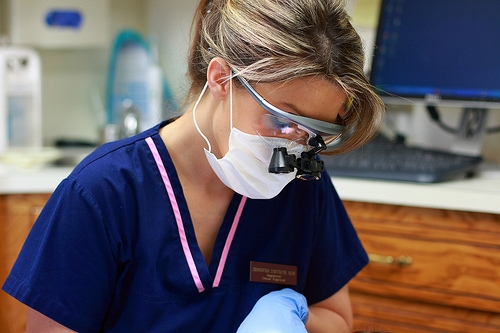September 23rd, 2016

At Carolina Dental Specialists, there are a few things we want to remind you of when you're on vacation, so that a day with friends and family won’t be spent dealing with an orthodontic emergency. Firstly, we are here for you whether you are in town or out of town on vacation. Give us a call and we may be able to address the problem over the phone. Second, if we are unable to help you fix the problem over the phone, we will help you find an orthodontic practice in your vacation area that can help you.
If you experience problems reaching our office, we suggest going online and searching for orthodontic practices in your area. Most orthodontists will lend a helping hand to another orthodontic patient and get them out of pain or discomfort.
If you have braces, whether they are metal, ceramic, or lingual, Dr. Robee Bailey Jr., DMD and our team suggest steering clear of the following foods to avoid broken brackets and/or wire distortion while you are on vacation:
- Chewy, sticky, or gummy food
- Apples, pears and other whole fruits (cut fruit into thin wedges before consuming)
- Bagels and hard rolls
- Bubble gum
- Corn on the cob
- Hard candies
- Hard cookies
- Pretzels
- All varieties of nuts, including peanuts, almonds, and cashews
Finally, if you have clear aligners and you lose your tray, don’t worry! Simply put in either the previous tray or the next tray and contact us as soon as you get home!
Follow these tips and you can have a worry-free vacation!
September 16th, 2016

An article was released to the public stating that dental X-rays contribute to a type of brain cancer. After reading an article like this, your first thought may be to avoid dental X-rays, but you may want to hold off on that quick judgment. As with any treatment we offer at Carolina Dental Specialists, education is your most valuable tool in deciding what is best for you.
How often dental X-rays are taken is based on risk for infection, physical symptoms, and clinical findings. The American Dental Association (ADA) is a governing body over the dental profession. The ADA states, “ . . . healthy adults receive routine mouth X-rays every two to three years. Dental X-rays are recommended every one to two years for children and every 1.5 to three years for teens. Children often require more X-rays than adults because of their developing teeth and jaws and increased likelihood for cavities.”
A "caries risk category" often determines how often dental X-rays are taken. The most recent documented resource to determine a caries risk is Caries Management by Risk Assessment (CAMBRA). This was adopted by the ADA and is used by dental professionals giving interval recommendations for X-rays.
With knowledge of your risk for dental infection, you will be informed by Dr. Robee Bailey Jr., DMD of the interval at which dental X-rays should be taken. You can rest assured that the standards published by the ADA have been researched extensively and are there to protect your personal health and safety.
Dental X-rays are most commonly digital, which significantly reduces exposure. There is more radiation exposure from the sun or in an airplane than in a dental X-ray. It is common practice to use a lead apron with a thyroid collar for protection during X-ray exposure.
Having a cavity means having an active, potentially harmful infection. Diagnosing such infection with minimal exposure through digital dental X-rays at our Concord, NC office does more good than harm.
September 9th, 2016

Gum (gingival) recession occurs when gums recede from the tops of the teeth enough to expose sensitive roots. People typically experience increased sensitivity to sugary or cold foods when gums no longer cover and protect teeth roots. In addition, untreated gum recession may lead to loosening of teeth and accelerated tooth decay, something Dr. Robee Bailey Jr., DMD see all too often.
Causes of Gum Recession
- Periodontal disease – a serious oral disease arising from poor oral habits
- Gingivitis – gum disease characterized by bleeding and swollen gums
- Aging
- Overly aggressive brushing and/or flossing – brushing hard in a scrubbing fashion will erode gum tissue at the roots of teeth
- Genetic predisposition to gingival recession – having inherited thin, insufficient gum tissue facilitates gum recession
- Bruxism – a condition where someone regularly grinds their teeth, usually during sleep
- Chewing tobacco/smoking – promotes chronically dry mouth and reduced gum health
Periodontal gingivitis may also cause causing drooping of the gums instead of gum recession. A gingivectomy removes excess gum tissue weakened by bacterial decay while a gingivoplasty can reshape gums around the teeth. If sagging or receding gums are left untreated, they may develop pockets (gaps) that provide hiding places for food particles, mucus and other mouth debris conducive to anaerobic bacteria growth. As the most destructive type of oral bacteria, anaerobic bacteria is responsible for tooth decay, cavities, gum disease, and chronic halitosis.
Treatments for Gum Recession
Corrective actions need implemented as soon as possible to reverse gum recession by addressing the cause. For example, people who brush with hard-bristled toothbrushes should switch to a soft-bristled toothbrush and brush more gently. If gum recession is the result of poor oral hygiene, improve oral hygiene habits by brushing after meals, flossing, rinsing with non-alcoholic mouthwash, and getting dental checkups and cleanings every six months. For severe cases of gum recession, soft tissue grafts can add gum tissue to exposed roots by removing tissue from the person's palate and attaching it to existing gums at the area of recession via laser surgery.
If you’re worried about gum recession, visit our Concord, NC office and talk to a member of our team.
September 2nd, 2016

Labor Day honors the contributions that workers have made to this country, and for many Americans, the holiday is a great time to relax at home with family and friends. But there are quite a few people who celebrate the holiday by getting out of town, with an estimated 33 million people traveling more than 50 miles over Labor Day weekend each year. If you’re dreaming of a great Labor Day escape but you’re not quite sure where to go, here are a few ideas from our team at Carolina Dental Specialists to give you some travel inspiration.
Explore a National Park
On a national holiday like Labor Day, it’s only fitting to experience the beauty of America’s landscapes by heading to the nearest national park. If you’re confined to an office most days of the year, national parks can provide a relaxing and scenic escape, whether you’re by yourself, traveling with a group of friends, or bringing the whole family along. Depending on how close you live to the nearest park, you can stay for an afternoon or for longer than a week. With 58 parks located in 27 states, there are plenty of beautiful areas to choose from.
Chow Down in a BBQ Haven
Barbecuing is a popular Labor Day activity, but instead of sweating over your own grill or oven, try visiting one of the country’s BBQ capitals. U.S. News and World Report names Memphis as the top BBQ destination, with more than 80 BBQ restaurants in the city, most notably Corky’s BBQ and Central BBQ. Kansas City is also known for the sweet taste of its sauces, while central Texas is said to have perfected the technique of smoking tender and flavorful brisket.
Relax on the Beach
Many people think of Labor Day as the unofficial start of fall, which brings cooler temperatures, more rain, and for many people, an end to lazy days at the beach. End your beach days with a bang by taking a trip to one of the coasts or to a lakeside beach. For an added dose of festivity, find a city or town that celebrates the occasion with a fireworks display over the water.
Whether you’re looking to turn your getaway into a full week affair or you simply want to experience a quick escape, make the most of your holiday by changing your surrounding scenery. Happy Labor Day from the Orthodontics and Periodontics practice of Dr. Robee Bailey Jr., DMD!





 Website Powered by Sesame 24-7™
Website Powered by Sesame 24-7™
